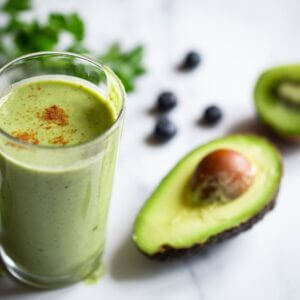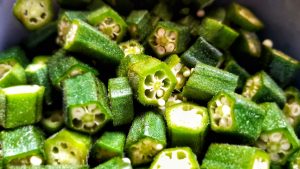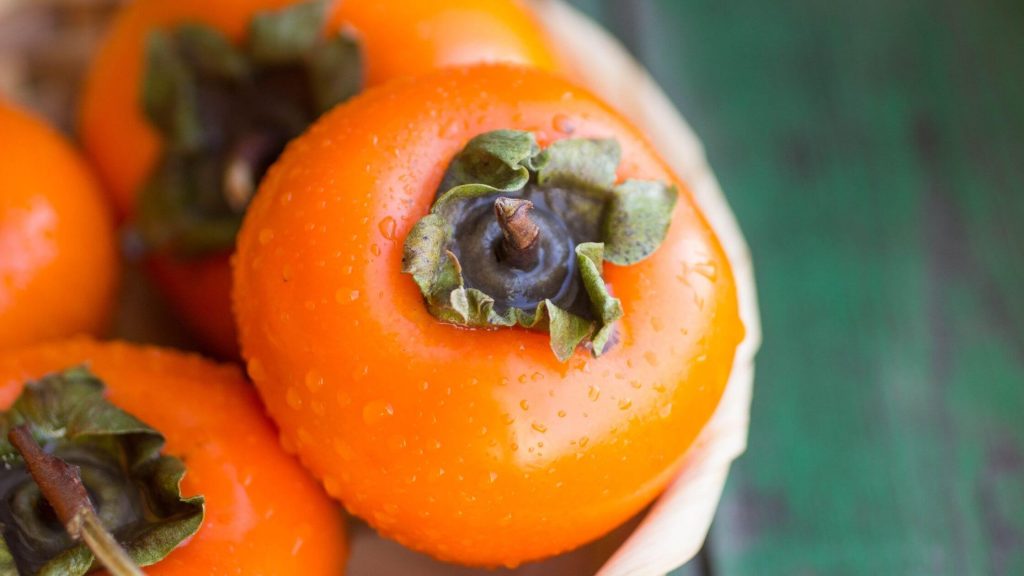How many exotic fruits can you tick off your bucket list? From chocolate pudding fruit (Black Sapote) to Jackfruit, there are a myriad of different flavours to experience. As winter draws closer, there is no end to the abundance of unique and exotic fruits rolling into Earth Markets stores—some you may have never heard of.
Australian farmers are producing an abundance of exotic produce, with everything from sweet figs to quinces ready to challenge your taste buds and expand your cooking horizons. While buying and cooking new produce for the first time can be a little daunting, we have a few tips, tricks and recipes up our sleeves to help guide you towards exotic culinary success. There is a whole new world of fruits, vegetables and nuts out there waiting to be explored, so why not check out some of the recipes below and tickle your taste buds this winter!
Chestnuts 
When you think of chestnuts, the first thing you probably think of is the good ol’ Christmas song—Chestnuts roasting on an open fire, Jack Frost nibbling at your nose?
While chestnuts certainly aren’t a Christmas crop in Australia, as the weather cools down they’re starting to become more abundant, rolling in from farms around North-Eastern Victoria. Delicate and slightly sweet, chestnuts are a fantastic addition to salads and roasts – Just boil or roast them until the shell separates, and then enjoy! Try this simple Chestnut and Bacon Green Bean recipe next time you have a roast.
Ingredients:
- 1 tbsp olive oil
- 125g bacon
- 1 garlic clove, finely chopped
- 200g chestnuts
- 350g green beans
- 1 tsp lemon rind
Method:
- Place chestnuts in a pot of cold water and bring to the boil. Allow chestnuts to simmer for 15 to 20 minutes, then remove from the water and gently remove the outer shell. You should be left with the yellow chestnut flesh.
- Wash the pot and bring fresh water to the boil. Boil green beans until cooked through and then drain and set aside.
- Heat oil in a frying pan and fry the bacon for a few minutes. Add the garlic and chestnuts, then stir for 2-3 minutes until chestnuts are golden and bacon is cooked.
- Once bacon and chestnuts are cooked, add green beans to the pan and toss until combined. Remove from the pan, season to taste and sprinkle with lemon rind. Enjoy!
Persimmon 
Persimmons have been around for thousands of years. Tasting like a unique combination of a mango and a roasted bell pepper, people around the world have been enjoying this unique fruit for thousands of years, baking them into muffins, adding them into salads and enjoying them alongside cheese. Primarily grown and picked in the winter months, Persimmons are currently in plentiful supply. Possessing a texture similar to an apricot, while they look a little different, they’re surprisingly simple to eat and enjoy. Try this deliciously simple Persimmon and Apple Salad as an introduction to them!
Ingredients:
- 150g spinach
- Balsamic Vinaigrette
- 1 Persimmon
- 1 Apple
- ¼ cup goats cheese
- 1 – 2 tbsp pepitas
- 2 tbsp pomegranate seeds
Method:
- Finely slice the persimmon and apple.
- Place the spinach in a serving bowl and dress with your favourite balsamic vinaigrette. Add the Persimmon and Apple slices, goat’s cheese, pepitas and pomegranate seeds on top and enjoy!
Quince 
Grown typically in the colder parts of Australia, quinces aren’t a fruit that you often see gracing the shelves of your local supermarket, but once you know how to cook it, you’ll learn to love it!
Small, yellow and bitter when raw, quince’s are best eaten in jellies and jams or as a delicious poached dessert or added to apple pie, often combined with plenty of sugar to counteract the tart taste. We have a super simple Poached Quince recipe that you will love, and will help ease you into the wonderful world of Quince.
Ingredients:
- 5 Quinces
- 1 cup caster sugar
- 1 cinnamon stick
- 1 slice lemon cheek
Method:
- Wash the quinces and slice any dark spots from the skin. Place in a large saucepan and add sugar, cinnamon and lemon. Cover with water.
- Bring the quince mixture to the boil and then reduce to a simmer. Ensure the quinces stay submerged by placing a piece of parchment paper on top. Put a lid on the saucepan and allow it to simmer on the lowest setting for around 4 hours until soft.
- Once quince is soft, remove from heat and allow to cool. Pour into a jar and store in the fridge. Serve them up with your favourite dessert, or add them to your morning yogurt and muesli!
Feijoa 
If you’re not from New Zealand, chances are you may never heard of Feijoa before, but this tiny superfood is actually packed full of flavour and nutrients!
Tasting like a delicious combination of strawberry, guava and pineapple, the Feijoa is packed with fibre, Vitamin C and folic acid, making them a fantastic fruit to eat during pregnancy. Feijoa’s are fantastic to eat raw or cooked, but if you want a simple way to dive into this tasty fruit, we’ve got a quick Feijoa, Honey and Yoghurt smoothie recipe that we think you’ll love.
Ingredients:
- Flesh of 6 feijoas (scoop out the white centre of the feijoa)
- 2 bananas
- 1 tbsp honey
- 1 tbsp almond butter
- 1 cup milk
- 3 tbsp yoghurt
- 1 tsp cinnamon
- 1 tsp vanilla extract
- 8 – 10 ice cubes
Method:
- Add all ingredients to a blender and combine until smooth.
- Pour into your favourite smoothie glass, and enjoy while cold.
Okra 
Have you ever heard of Okra? If you haven’t, that’s alright—a large portion of Australia hasn’t, but you’re certainly missing out!
Originating in Ethiopia, Okra is a thin, green seed pod that’s most commonly grown and found in hotter climates, specifically in the Northern Territories of Australia.
Best eaten when cooked, Okra is a simple ingredient to add to any soup, but you do need to know how to cook it first.
Here’s a simple Garlic Sauteed Okra recipe to get you started.
Ingredients:
- 450g okra
- 2 tsp cooking oil
- 1 clove garlic
- Pinch salt
- (Optional) grape tomatoes
Method:
- Gather your okra pods together and trim off the stem end. Pat your okra pods dry to prevent any sliminess.
- Heat the oil in a pan. Finely slice the garlic and then throw in the pan for about a minute.
- Add the okra to the pan and stir to coat with oil, then allow to cook for around 8 minutes until okra starts to brown.
- Transfer the okra to a serving plate, add grape tomatoes and serve while warm. Sprinkle with salt and enjoy!
Custard Apple 
When you hear the word ‘custard apple’, you probably think of an apple with the creamy taste of everyone’s favourite custard. Well, while a custard apple looks slightly different to your ordinary apple, it tastes just like you’d expect it to—just like custard!
Natures natural custard, custard apple’s can be used in a variety of desserts, cakes and smoothies, and are best picked when they have a little give to them, just like an avocado.
Currently plentiful in stores, these tasty green fruits are a must-try for any sweet tooth. We’ve even found a tasty Custard Apple Tea Cake recipe to help introduce you both!
Ingredients:
- 2 custard apples
- 125g butter
- ½ cup caster sugar plus 3tsp extra
- 1 tsp vanilla extract
- 2 eggs
- 1 ½ cups self-raising flour
- ¾ tsp ground cinnamon
Method:
- Pre-heat oven to 170 degrees C. Grease a 11 x 21cm loaf pan, then line with baking paper.
- Cut the custard apples in half and scoop white flesh into a bowl. Remove the seeds and roughly mash the pulp. You’ll need about 1 ½ cups of flesh.
- In a separate bowl, use electric beaters to combine the butter, ½ cup sugar and vanilla extract until mixture is pale and creamy. Add in eggs, one at a time, and beat until all combined.
- Using a metal spoon, slowly fold in the custard apple pulp until well combined. Sift the flour and slowly fold into the custard apple mixture.
- Spoon the mixture into the prepared baking tin and smooth out the top. Sprinkle the remaining caster sugar and cinnamon over the top, and place into the oven.
- Bake for 50 minutes, and then remove from the oven and allow to cool. Slice up and serve while warm, or place into a sealed container and enjoy later!

